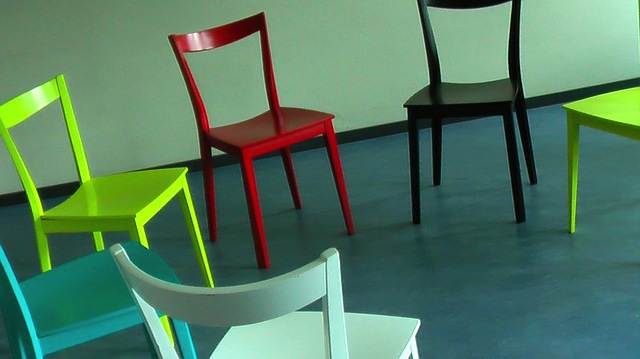
Dr. Dan Metevier is a psychologist from Carlsbad, California. He works with a variety of clients and helps these people feel better about themselves, their lives, and their relationships. You can visit Dan’s website here.
So, what really happens to your brain when you go to a therapist?
Let’s start from the very beginning (a very good place to start). In the beginning, our brains have a lot of ‘hardware’, estimated at one hundred billion brain cells, but they have very little ‘software’. We only have ‘programs’ that let us do things like cry, sleep, poop, suck etc.
As we grow up, our brains act like little organic computers that program themselves by creating or undoing connections between brain cells, estimated at about 10,000 connections per cell, or about one quadrillion (that’s a one with 15 zeroes after it) possible connections in all. That’s a lot!
The connections we can make in our brain reflect the ‘genetic potential’ we receive from our parents. It’s like your parents each had a deck of cards and threw in some of them to give you your hand. So, you play with the cards you were dealt, so to speak. If both your parents throw in a ‘smart’ card, then you have a good chance at being smart. The same holds true of height, eye color, hair color, temperament, attention deficit, bipolar disorder, alcoholism, and so on. You would have the potential/possibility for those but may or may not realise (acquire or fulfill) that potential.
Let’s look at a scenario…
The connections we do make in our brain reflect how we use this deck of cards to deal with our environment as we grow up. If Person A has an easy, pleasant, nurturing childhood, their brain will get ‘wired up’ or ‘programmed’ to process that kind of input. If Person B has a rough, abusive, lonely childhood, their brain gets programmed to deal in some creative manner (sometimes called ‘a defense mechanism’) with that kind of life.
Person A can readily deal with nice, pleasant, friendly people, but may have difficulty knowing what to do with a mean, unpleasant, abusive person because they have no program to process input from that kind of person. They may assume the mean person is just having a bad day (or life) and will change sometime in the future. This assumption may get them into trouble.
Likewise, Person B can deal in some way with abusive, mean people, but may have difficulty knowing what to do with a healthier person. They have no program to process input from a healthy person. To them, abusive behavior seems “normal” and they feel in some way comfortable, or at least familiar, with it. Person B may even find they are attracted to abusive others again and again because that’s the kind of person their brain (thus far) can deal with.
What kind of picture forms in your mind right now? Do you recognize any of this in yourself or others you know?
Both Person A and Person B can benefit from going to therapy (therapy is not just for crazy people any more!!). Person B may have suffered through a string of bad relationships, not knowing why, or unable to figure out, how to establish or keep a healthy relationship. Person B’s brain does not ‘do’ healthy. Person A, on the other hand, may have stumbled across a relationship that doesn’t make sense or may even have traumatised them, since Person A’s brain doesn’t ‘do’ unhealthy.
Enter therapy. Please! (Apologies to Henny Youngman.)
So let’s say Person B seeks relief by entering therapy with a relatively healthy therapist (not guaranteed, by the way, but that’s a whole other Oprah). At first, Person B may feel uncomfortable with the therapist because his or her brain doesn’t process input from the healthy therapist. Luckily, however, Person B’s brain has plasticity (a fancy word meaning it can change) and during every encounter with the therapist, Person B’s brain gets slightly rewired or reprogrammed.
Almost regardless of what happens during these encounters, as long as the therapist behaves in a healthy manner, Person B’s brain creatively adapts to deal more effectively with ‘healthy’. Person B’s brain cells slowly undo unhealthy connections and create healthy connections. After a while, Person B finds they too can act in healthy ways and they can enter and maintain healthy relationships (well, healthier, at least).
Person A can benefit from working with a healthy therapist, too. Possibly some brain-expanding education, role-playing, or other method provided in therapy will help add to the existing programs in Person A’s brain that they can call upon when encountering unhealthy people.
So, your brain-on-therapy makes subtle shifts, disconnections, re-connections, new connections, and so on, leading to greater and greater health. And then one day you’ll wake up in the morning and realise your life feels much better.
This is the feeling of your brain after therapy.
(Click here for Part II of this series.)
This entry was first posted in About Therapy, This is Your Brain by danmetevier.
Share the love
[Sassy_Social_Share]
2 Comments
Leave a Comment
About Dr Sarah
Neuroscientist, Author, Speaker, Director of The Neuroscience Academy suite of professional training programs.
Latest Posts
Free 10 day micro-training in neuroscience

Learn one neuroscience concept a day!
10 simple, bite-sized lessons in brain health, delivered daily to your inbox


This is a cute story , but where is the neuroscience ?
Could you please provide references to the studies of the biology behind the process described?
Thank you
Bob s
Hi Bob. Yes…light on the neuroscience today with Dan’s guest post. But I like to vary it up!!
My blog post on neuroscience and coaching digs a bit deeper: https://drsarahmckay.com/7-principles-neuroscience-every-coach-know/